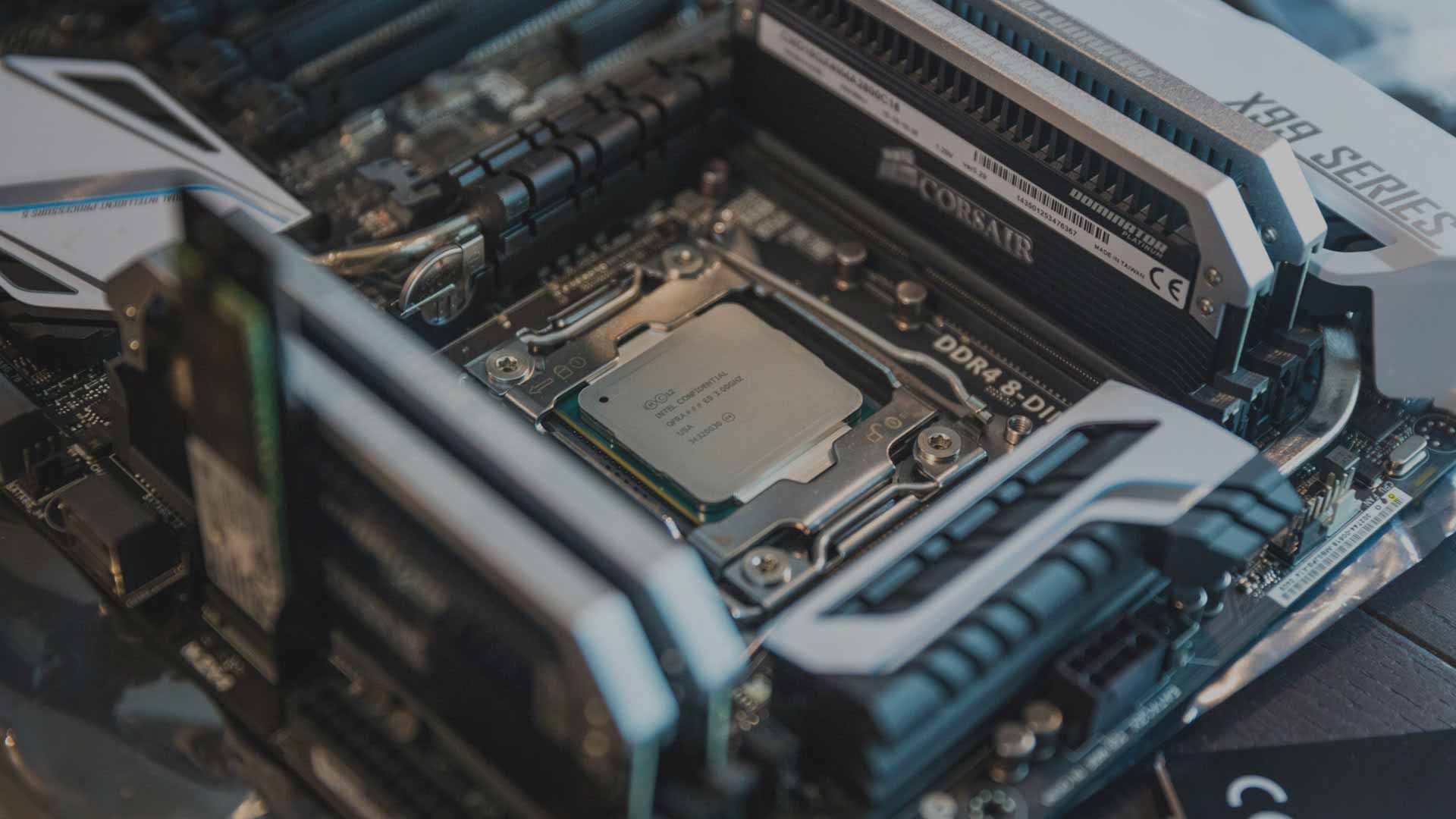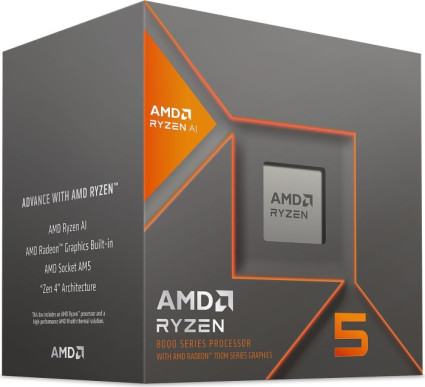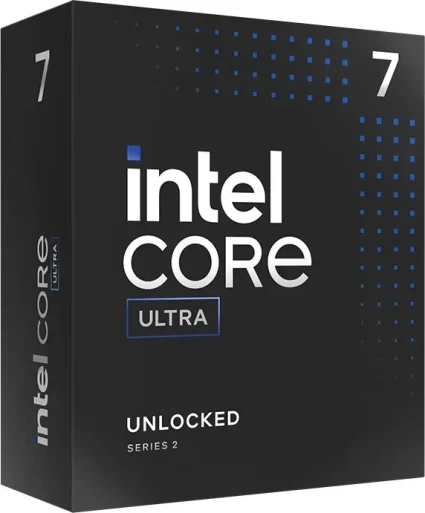
AMD Ryzen 5 8600G vs. Intel Core Ultra 7 265K
In diesem Vergleich von AMD Ryzen 5 8600G versus Intel Core Ultra 7 265K vergleichen wir die technischen Daten der beiden CPUs. Welcher Prozessor ist schneller? Hier gibt es FPS & Benchmarks in Gaming und Anwendungen.
Hinweis: Unsere Links sind Affiliate Links. Wir erhalten beim Kauf eine kleine Provision, ohne dass sich euer Preis erhöht.

Allgemeine Informationen
| Günstigster Preis |
|
|
| Serie | Ryzen 8000 | Intel Core Ultra 200 |
| Chip-Architektur | Zen 4 | Lion Cove (P-Core) + Skymont (E-Core) |
| Codename | Phoenix | Arrow Lake-S |
| Produktname | AMD Ryzen 5 8600G | Intel Core Ultra 7 265K |
Spezifikationen
Die Anzahl der Rechenkerne, die maximale Taktrate und die Größe des Cache können sich auf die Leistung in Spielen und Anwendungen auswirken. Mit 6 Kernen bietet der AMD Ryzen 5 8600G deutlich weniger Kerne als der Intel Core Ultra 7 265K mit 20 Rechenkernen. Der maximale Takt liegt beim AMD Ryzen 5 8600G mit 5.00 GHz etwas niedriger als beim Intel Core Ultra 7 265K mit 5.50 GHz. Der Cache ist beim AMD Ryzen 5 8600G mit 6 MB L2-Cache + 16 MB L3-Cache zu 36 MB L2-Cache + 30 MB L3-Cache deutlich kleiner als beim Intel Core Ultra 7 265K.
| Kerne (Gesamt) | 6 | 20 |
| Threads | 12 | 20 (8+12) |
| Anzahl P-Cores | 6C | 8C |
| Anzahl E-Cores | - | 12c |
| Basis-Takt | 4.30 GHz | 3.90 GHz |
| Takt P-Cores | 4.30 GHz | 3.90 GHz |
| Takt E-Cores | - | 3.30 GHz |
| Turbo-Takt | 5.00 GHz | 5.50 (Turbo Boost Max 3.0) GHz |
| Turbo P-Cores | 5.00 GHz | 5.50 (Turbo Boost Max 3.0) GHz |
| Turbo E-Cores | - | 4.60 GHz |
| Gesamter L2-Cache | 6 MB | 36 MB |
| Gesamter L3-Cache | 16 MB | 30 MB |
| Fertigung | TSMC 4 nm | TSMC 3 nm |
| Rechenleistung | - | - |
| Leistungsaufnahme (TDP) | 65W 45W cTDP-down |
125W (Processor Base Power) 250W (Maximum Turbo Power) |
Mainboard-Kompatibilität
Während der AMD Ryzen 5 8600G den AMD AM5 Sockel nutzt, ist der Intel Core Ultra 7 265K mit Mainboards für den Sockel Intel 1851 kompatibel. Die genaue Chipsatz-Eignung und die unterstützten PCIe-Lanes können Sie der Tabelle entnehmen.
| Sockel | AMD AM5 | Intel 1851 |
| Chipsatz-Eignung | A620, B650, B650E, B840, B850, X670, X670E, X870, X870E (modellabhängig: PRO 600, PRO 665, X600) | Z890 |
| PCIe-3.0-Lanes | - | - |
| PCIe-4.0-Lanes | 20x (verfügbar: 16) | - |
| PCIe-5.0-Lanes | - | 24x (verfügbar: 20) |
RAM-Kompatibilität
Während Sie beim AMD Ryzen 5 8600G bis zu 256 GB vom Typ DDR5 im Dual Channel verbauen können, unterstützt der Intel Core Ultra 7 265K bis zu 192 GB DDR5 Arbeitsspeicher.
| Speicher-Controller | DDR5 | DDR5 |
| Anzahl Speicherkanäle | Dual Channel | Dual Channel |
| max. Speichermenge | 256 GB | 192 GB |
| ECC-Unterstützung | - | ✓ |
Grafik
| iGPU | ✓ | ✓ |
| iGPU-Modell | AMD Radeon 760M | Intel Graphics |
| iGPU-Takt | 2,80GHz | 0,30-2,00GHz |
| iGPU-Einheiten | 8CU/512SP | 4Xe/64EU/512SP |
| iGPU-Rechenleistung | 2.87 TFLOPS (FP32) | 2.05 TFLOPS (FP32) |
| iGPU-Architektur | RDNA 3, Codename "Phoenix" | Xe-LPG / Gen 12.7 |
| iGPU-Interface | DP 2.1, HDMI 2.1 | DP 2.1 UHBR20 (7680x4320@60Hz), eDP 1.4b (3840x2400@120Hz), HDMI 2.1 (7680x4320@60Hz) |
| iGPU-Funktionen | 4x Display Support, AMD Eyefinity, AMD FreeSync 2, AV1 encode/decode, H.265 encode/decode, VP9 decode, DirectX 12.1, OpenGL 4.5, Vulkan 1.0 | 4x Display Support, 2x Codec Engines / Video Decode Boxes, Intel Quick Sync Video, AV1 encode/decode, H.265 encode/decode, H.266 encode/decode, VP9 encode/decode, HDCP 2.3, DirectX 12.1, OpenGL 4.5, OpenCL 3.0, Vulkan 1.0 |
Sonstiges
| Freier Multiplikator | ✓ | ✓ |
| Stepping | PHX-A1 | B0, Spec Code: SRQCW |
| Heatspreader-Kontaktmittel | - | - |
| Temparatur max. | 95°C (Tjmax) | 105°C (Tjunction) |
| Fernwartung | - | ✓ (Intel vPro, Intel vPro Enterprise) |
| Einführung | 2024/Q1 (8.1.2024) | 2024/Q4 (24.10.2024) |
| Herstellergarantie | 3 Jahre bei AMD® Boxed-Prozessoren (Info EN) | 3 Jahre bei Intel® Boxed-Prozessoren (Info DE/Info EN) |
CPU-Funktionen
| AES-NI | ✓ | ✓ |
| AVX | ✓ | ✓ |
| AVX2 | ✓ | ✓ |
| Boot Guard | - | ✓ |
| CET | - | ✓ |
| DL Boost | - | ✓ |
| EIST | - | ✓ |
| GNA 3.0 | - | - |
| Idle States | - | ✓ |
| Instruction Set | - | ✓ |
| ISM | - | ✓ |
| MBEC | - | ✓ |
| Optane Memory Support | - | - |
| OS Guard | - | ✓ |
| Secure Key | - | ✓ |
| Speed Shift | - | ✓ |
| SSE4.1 | ✓ | ✓ |
| SSE4.2 | ✓ | ✓ |
| Thermal Monitoring | - | ✓ |
| VMD | - | ✓ |
| VT-d | - | ✓ |
| VT-x | - | ✓ |
| VT-x EPT | - | ✓ |
| XD Bit | - | ✓ |
Spiele

- Intel Core Ultra 7 265KAVG133.45 %1%137.35 %
- AMD Ryzen 5 8600GAVG100.00 %1%100.00 %

- AMD Ryzen 5 8600GAVG175.8 FPS1%134.9 FPS
- Intel Core Ultra 7 265KAVG252.9 FPS1%216.9 FPS

- AMD Ryzen 5 8600GAVG456.4 FPS1%275.7 FPS
- Intel Core Ultra 7 265KAVG608.4 FPS1%291.6 FPS

- AMD Ryzen 5 8600GAVG140.2 FPS1%84.9 FPS
- Intel Core Ultra 7 265KAVG182.3 FPS1%130.9 FPS

- AMD Ryzen 5 8600GAVG158.2 FPS1%114.5 FPS
- Intel Core Ultra 7 265KAVG212.4 FPS1%144.3 FPS

- AMD Ryzen 5 8600GAVG117 FPS1%80.1 FPS
- Intel Core Ultra 7 265KAVG141.9 FPS1%106.3 FPS

- AMD Ryzen 5 8600GAVG192.4 FPS1%121 FPS
- Intel Core Ultra 7 265KAVG252.8 FPS1%174 FPS

- AMD Ryzen 5 8600GAVG67.7 FPS1%49.5 FPS
- Intel Core Ultra 7 265KAVG95.1 FPS1%67.6 FPS

- AMD Ryzen 5 8600GAVG200 FPS1%107.6 FPS
- Intel Core Ultra 7 265KAVG266 FPS1%149.5 FPS

- Intel Core Ultra 7 265KAVG0.88 FPSAMD Ryzen 5 8600GAVG1.11 FPS

- Intel Core Ultra 7 265KAVG3.24 FPSAMD Ryzen 5 8600GAVG3.42 FPS
Produktivität
Produktivität

- Intel Core Ultra 7 265KAVG162.08 %AMD Ryzen 5 8600GAVG100.00 %

- Intel Core Ultra 7 265KPKT144932 PunkteAMD Ryzen 5 8600GPKT91485 Punkte

- Intel Core Ultra 7 265KPKT1446 PunkteAMD Ryzen 5 8600GPKT1217 Punkte

- Intel Core Ultra 7 265KPKT1005 PunkteAMD Ryzen 5 8600GPKT731 Punkte

- Intel Core Ultra 7 265KSEK161 SekundenAMD Ryzen 5 8600GSEK409 Sekunden

- Intel Core Ultra 7 265KPKT1942 PunkteAMD Ryzen 5 8600GPKT768 Punkte

- Intel Core Ultra 7 265KPKT3184 PunkteAMD Ryzen 5 8600GPKT2370 Punkte

- Intel Core Ultra 7 265KPKT21134 PunkteAMD Ryzen 5 8600GPKT12210 Punkte

- Intel Core Ultra 7 265KSEK47 SekundenAMD Ryzen 5 8600GSEK93 Sekunden




